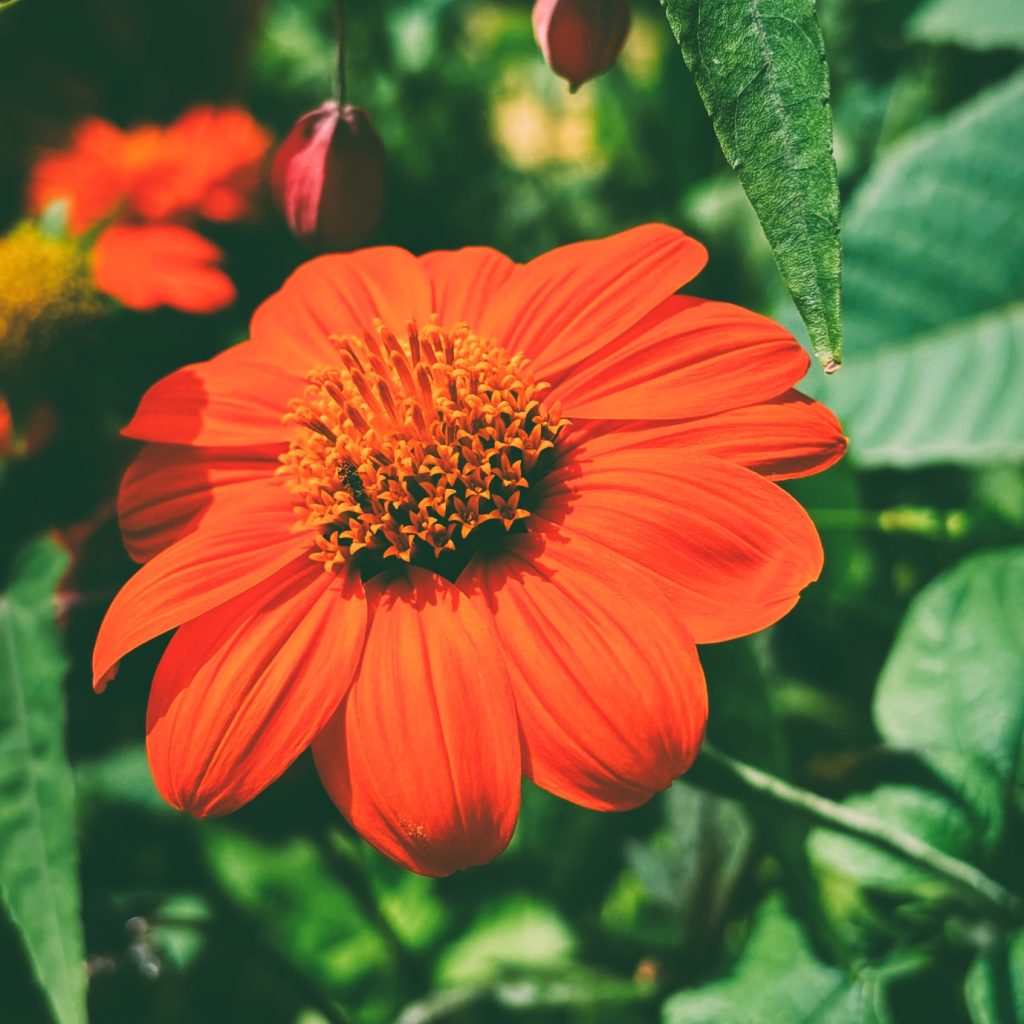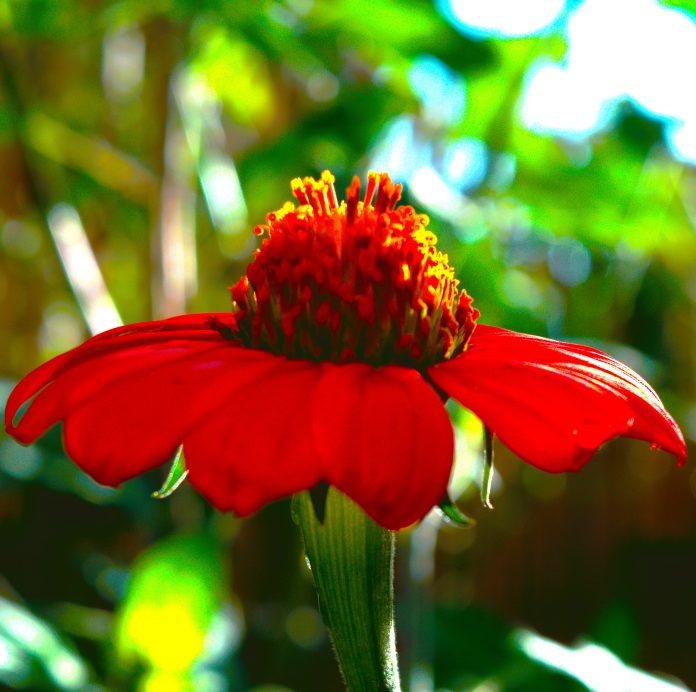Tithonias (Tithonia rotundifolia and Tithonia diversifolia), commonly known as Mexican Sunflowers, are stunning, fast-growing plants that bring a tropical feel to UK gardens. Here are some key facts about growing them in the UK:
The two most commonly grown species of Tithonia—Tithonia rotundifolia and Tithonia diversifolia—differ in size, growth habit, and use. Here’s how they compare:
1. Tithonia rotundifolia (Mexican Sunflower)
- Habit: Upright, bushy annual (in the UK)
- Height: 1.2–2m tall
- Flowers: Large, bright orange-red daisy-like blooms, typically 5–8cm across
- Leaves: Rounded to slightly lobed, soft-textured
- Blooming period: July to first frost
- Growth speed: Fast, but smaller and more compact than Tithonia diversifolia
- Best use: Ideal for borders, pollinator gardens, and cut flowers
- Propagation: Grown from seeds, sown in spring
🌿 Tithonia rotundifolia is the most commonly grown in UK gardens and thrives as a showy summer annual.

2. Tithonia diversifolia (Tree Marigold, Bolivian Sunflower)
- Habit: Tall, perennial shrub (but treated as a tender annual in the UK)
- Height: Can grow 3–5m tall in warm climates (shorter in the UK)
- Flowers: Yellow daisy-like blooms, slightly larger than T. rotundifolia (up to 10cm across)
- Leaves: Deeply lobed, coarser and more deeply cut than T. rotundifolia
- Blooming period: Late summer to autumn (longer in tropical climates)
- Growth speed: Extremely fast-growing—can reach full size in a season
- Best use: Often used as a green manure, bee plant, or tall screen
- Propagation: Can be grown from seeds or cuttings
🌿 Tithonia diversifolia is rarely grown in the UK because it struggles to flower before frost. However, it can be overwintered indoors as a perennial in frost-free conditions.
Key Differences Summary
| Feature | Tithonia rotundifolia | Tithonia diversifolia |
|---|---|---|
| Lifespan | Annual | Perennial (but frost-tender) |
| Height | 1.2–2m | 3–5m (tropical); smaller in UK |
| Flower Colour | Bright orange-red | Yellow |
| Flower Size | 5–8cm | 7–10cm |
| Leaves | Rounded to slightly lobed | Deeply cut, coarse |
| Growth Speed | Fast, but manageable | Very fast, large plant |
| Propagation | Seeds | Seeds or cuttings |
| Best Use | Borders, pollinator gardens, cut flowers | Tall screens, biomass, green manure |
For UK gardens, Tithonia rotundifolia is the better choice because it blooms earlier and thrives as an annual. Tithonia diversifolia is more suited to tropical climates but can be grown in a greenhouse or large container if overwintered indoors.
1. Climate Considerations
- Tithonias thrive in warm, sunny conditions but are not frost-hardy.
- They must be grown as annuals in the UK, as they will not survive winter.
- Best suited for sheltered, sunny spots with well-drained soil.
2. Sowing and Planting
- Start seeds indoors in early spring (March-April) in a propagator or warm windowsill.
- Harden off before planting out after the last frost (usually late May–early June).
- Space plants about 30–45 cm apart to allow them to bush out.
3. Growth and Flowering
- Can reach 1.2–2m tall, forming a shrubby, multi-branched habit.
- Flowers from July until the first frosts.
- The bright orange or yellow flowers are highly attractive to pollinators, especially butterflies and bees.
4. Soil and Watering
- Prefers poor to moderately fertile, well-drained soil.
- Avoid overfeeding with nitrogen, as this promotes foliage at the expense of flowers.
- Once established, they are drought-tolerant, needing only occasional watering.
5. Pruning and Maintenance
- Deadhead regularly to encourage continuous flowering.
- Taller plants may need staking in exposed areas to prevent wind damage.
- Pinching out tips when young encourages bushier growth.
6. Wildlife Benefits
- Attracts butterflies, bees, and other pollinators.
- Can serve as a nectar source for late-season pollinators in autumn.
7. Overwintering (If Attempted)
- Not practical in most of the UK, but in very mild areas, plants can sometimes be overwintered in a greenhouse.
- Cuttings can be taken in autumn and overwintered indoors, though this is more common with Tithonia diversifolia.




